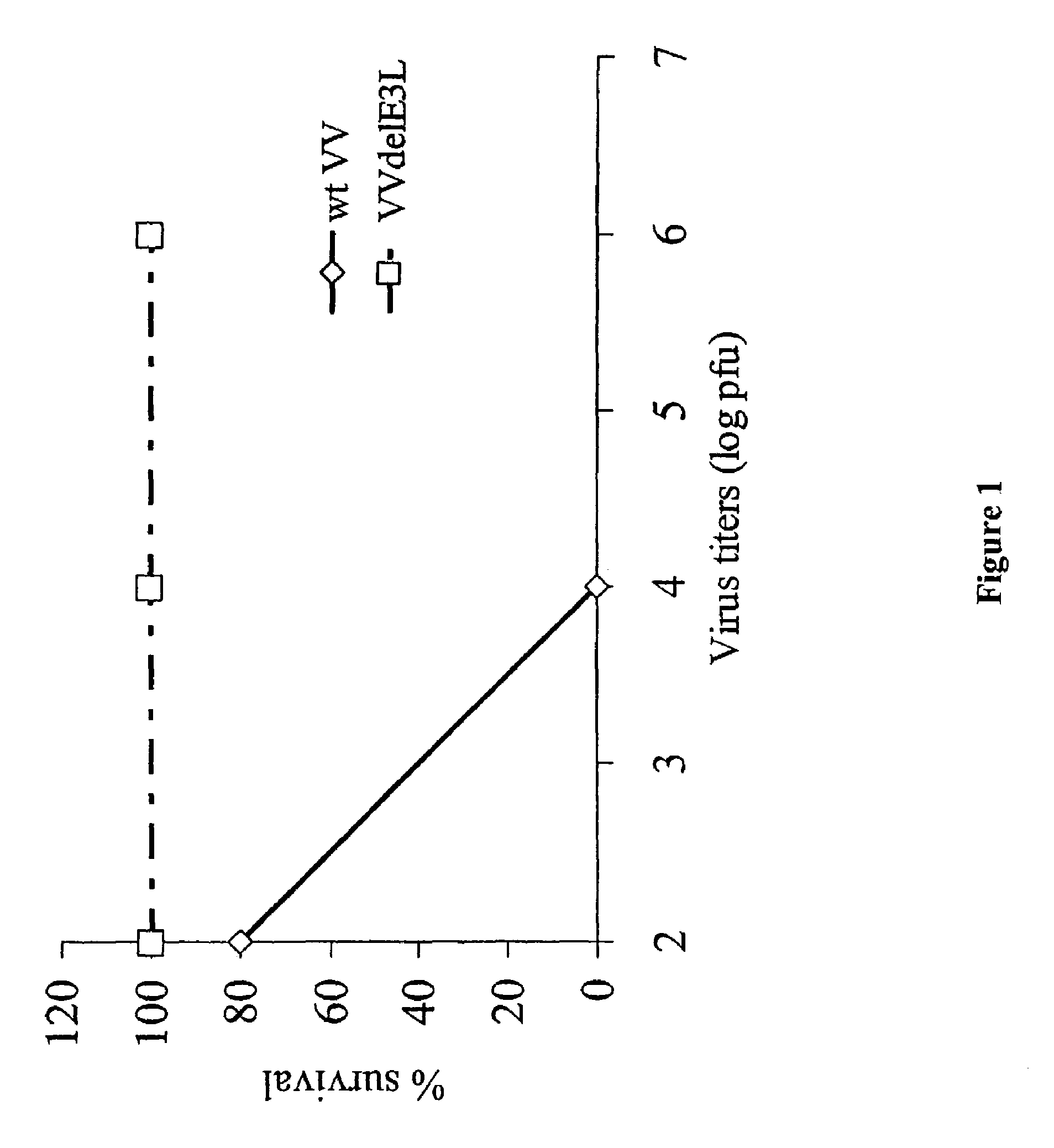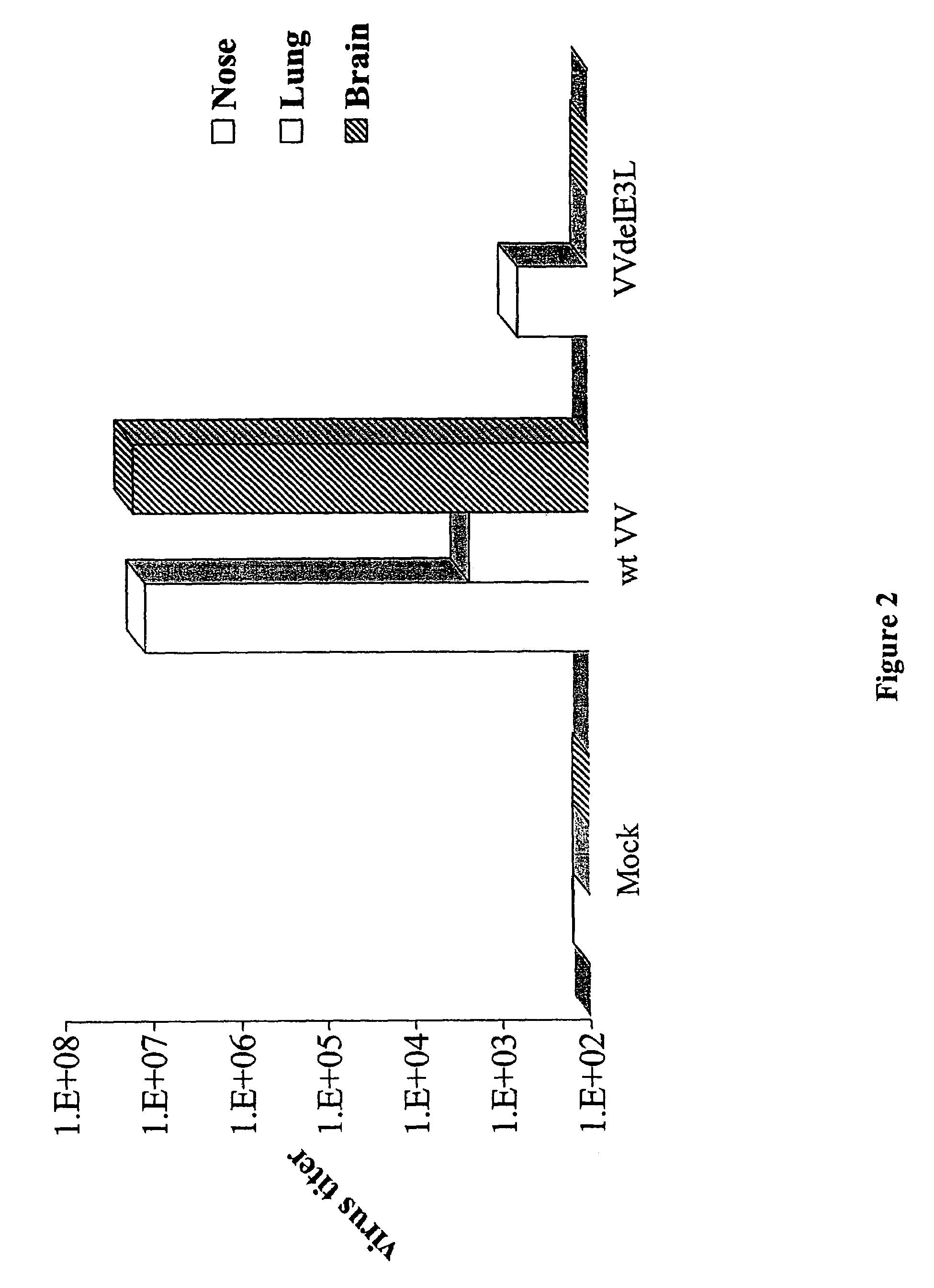Use of vaccinia virus deleted for the E3L gene as a vaccine vector
a technology of vaccinia virus and e3l gene, which is applied in the field of vaccine vectors using vaccinia virus deleted for the e3l gene, can solve the problems of lack of significant pathogenic properties, and achieve the effects of reducing pathogenicity, broad host range, and maintaining immunogenicity
- Summary
- Abstract
- Description
- Claims
- Application Information
AI Technical Summary
Benefits of technology
Problems solved by technology
Method used
Image
Examples
example 1
Construction of Recombinant Vaccinia Virus
[0062]The β-galactosidase gene under the control of the vaccinia virus 11 k promoter was cloned into PMPE3delGPT plasmid. This plasmid was used for in vivo recombination with the WR strain of vaccinia virus. Recombinants were isolated by three rounds of plaque purification on a monolayer of BHK-13 cells stained with X-Gal. Deletion of the E3L gene was confirmed by western blotting with E3L specific antibody. PMPE3LdelGPT plasmid, the process of in vivo recombination and isolation of recombinants have been previously described in Kibler et al. (1997, J Virol 71(3):1992-2003).
example 2
Survival of Mice Following Intranasal Infection with Vaccinia Virus
[0063]Groups of 5 C57BL / 6 mice were infected with different doses of wild type (wt) vaccinia virus (VV) and VV deleted for the E3L gene (VVΔE3L), by intranasal route. There was 100% survival of mice infected with the highest dose (106) of the mutant virus while wtVV had an LD50 or approximately 103 pfu. The mutant VV construct was over 1000-fold less pathogenic than wtVV (FIG. 1).
example 3
[0064]Groups of 3 C57BL / 6 mice were infected with 106 plaque-forming units of wtVV and VVΔE3L by intranasal route. Tissues were harvested, processed and titrated in RK-13 cell line. The figure represents the average titer per gram of tissue of the 3 mice infected with each virus. Wild type VV was detected in the nasal turbinates, lungs, and brain by 5 days post infection. VVΔE3L was detected in the nasal turbinates, but they did not spread to the lung and brain. 4 of the 5 VV mutants replicated to high titers in the nose following infection (FIG. 2).
PUM
| Property | Measurement | Unit |
|---|---|---|
| temperature | aaaaa | aaaaa |
| concentration | aaaaa | aaaaa |
| pH | aaaaa | aaaaa |
Abstract
Description
Claims
Application Information
 Login to View More
Login to View More - R&D
- Intellectual Property
- Life Sciences
- Materials
- Tech Scout
- Unparalleled Data Quality
- Higher Quality Content
- 60% Fewer Hallucinations
Browse by: Latest US Patents, China's latest patents, Technical Efficacy Thesaurus, Application Domain, Technology Topic, Popular Technical Reports.
© 2025 PatSnap. All rights reserved.Legal|Privacy policy|Modern Slavery Act Transparency Statement|Sitemap|About US| Contact US: help@patsnap.com



